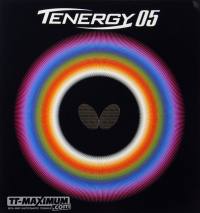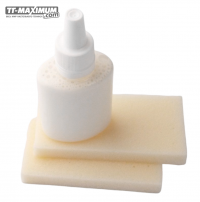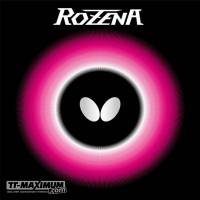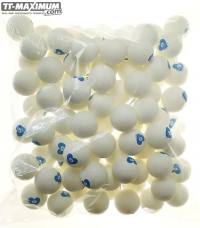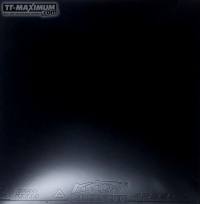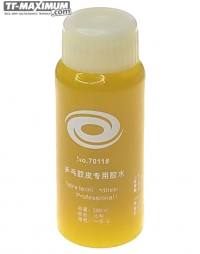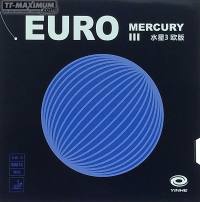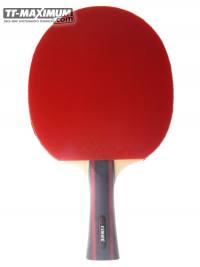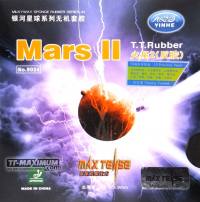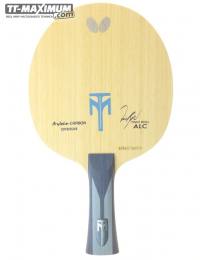'Elbow' is referred as the point where a shakehand player changes his strokes from forehand to backhand. All players have some problems to handle a ball going fastly to this point. The better the player, of course, it would be much easier for him to return this kind of balls, and he is more likely to step around and hit it with a powerful stroke, but even at the higher levels, the quality of his returns will be still lower in comparison with a return done with a 'clean' forehand or backhand as he had to move get in position before playing his stroke. My advice is to use this to your profit.
1 - WHEN to do it:
When your opponent is close to table. When he is moving closer to the table. When he is stepping around wrongly (overanticipating). When you see a chance of doing it. Do it as a serve return too.
2 - WHY to do it:
To force a weak return. Most of the time the ball will come back, but it will be a weak return, since your opponent had no time to step around and loop, or done with a short or 'poor' arm swing. You can take advantage of weak returns like this. Of course, if you can score from a kill at his elbow, it's even better.
3 - WHICH strokes are best to be placed at elbow:
Punch blocks against fast loops are the best, if your opponent is close to table. Loops or flips are fine. Fast pushes are very good too if you are pushing each other. Anything that gives your opponent little time to react. Play off the bounce on his short balls, and he will look FREEZED. If you are going for a hard shot, you have to know what are the chances if has to come back. It it's 0%, place it far from your opponent, but if it's (let's say) 40%, and you place it at your opponent's elbow, his return will be weak, and you'll be able to hit it hard. No spin fast balls at elbow are even more effective, same as sidespin, or any heavy spin. Learn to serve at his elbow. Do so with sidespin or corkscrew so your opponent is suddenly surprised by a second bounce that makes the ball jump to his body.
4 - WHERE is the elbow located:
If your opponent is on a ready position that is backhand oriented (showing to you his backhand rubber), his elbow is somewhere between his wrist and his elbow (this point is moving to the player's forehand if he's more used to play backhand all the time). It is not at the same spot for all players, so you'll have to find it during play. If he is on a ready position that is forehand oriented, his elbow is at the point where he can only hit the ball with his backhand, as closer as possible to his forehand. Be careful: place the ball a bit more to his forehand, and he could step around and loop. The grip that your opponent has, determines if his style is forehand or backhand oriented, and that determines where the elbow is located. Also, the elbow is moving according to his feet.
5 - HOW to set up the rally to play a ball at his elbow:
You could, if you know that your opponent is weak against elbow balls, chase his elbow in the following manner (that's an example, and that can be done in a lot of ways): Play a long ball, then do one quick drop shot, then one long ball at his elbow. The drop shot is the key here. I don't recommend playing like this as a rule of thumb, but that can work against certain players. I recommend to use elbow balls when you see a chance of it.
6 - WHO will hurt elbow balls the most:
Players with bad footwork. Players that play very close to table (This ones tend to have its elbow at more extreme spots than usual). Long arm swing players. Players with weak backhand or forehand (his elbow is often a bit closer to his weak side). Players with poor ball control. Players that let the ball drop before they play his stroke. Players with certain shakehand grips that screw his wrist action.
7 - WHAT nobody uses but is very effective:
High balls at elbow: Extremely difficult to do, since a high ball gives time to your opponent to step around. If you can send a fast and high ball to his elbow (almost to his shoulder), he can be in troubles, same as penholders with high balls to his backhand.
Последние комментарии
к статьям
к статьям
26 Jul 2024, 15:56К статье: ДОЛГОВЕЧНОСТЬ ОСНОВАНИЙ, срок службы, когда менять основание, сколько служат основания ракеток
От: Autsider
24 May 2024, 08:34К статье: что значит Big Dipper? Почему накладка YINHE так называется
От: Autsider
24 Feb 2024, 11:01К статье: КРУТИТЬ РАКЕТКУ - как научиться? Какие ручки и ОСНОВАНИЯ подходят ЛУЧШЕ чтобы ВРАЩАТЬ в руке
От: Autsider
05 Feb 2024, 11:38К статье: ЛАКИРОВАТЬ ОСНОВАНИЕ надо или нет? НУЖЕН ЛИ ЛАК ДЛЯ ОСНОВАНИЯ - что влияет, почему вопрос не простой
От: Autsider
02 Feb 2024, 13:56К статье: Dr Neubauer TORNADO SUPREME SOFT обзор КОРОТКИЕ ШИПЫ сравнение с TORNADO SUPREME чем лучше вращать
От: Autsider
30 Nov 2023, 14:24К статье: ЛИПУЧКИ и липкость у НАКЛАДОК этого типа, чем отличаются от других
От: Autsider
20 Nov 2023, 13:55К статье: на НАКЛАДКЕ - ПУЗЫРЬ. Откуда берется, что делать, можно ли починить
От: Autsider
27 Sep 2023, 15:58К статье: КАК Я ПЕРЕШЕЛ с губки МАХ на толщину 1,8 мм. ЗАЧЕМ ТЕНЗОР такой толщины кому и для какого стиля игры
От: Autsider
Chasing The Elbow
30.08.08

